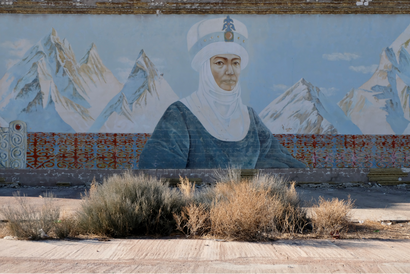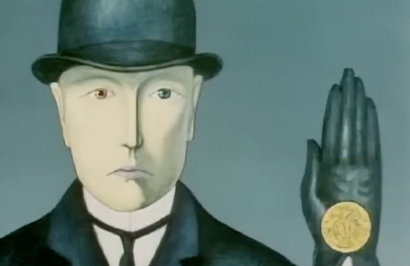Intourist Travel Posters - How the USSR Used Propaganda to Drive Tourism

Intourist held a monopoly on tourism in the USSR. As the only tourism agency in the Soviet Union, Intourist was responsible for attracting and accommodating all tourists. Like every other industry or ideal in the USSR, they used propaganda to advance their agenda. Posters targeted at western audiences. They portrayed the Soviet Union as a glamorous and exotic land rather than a country of labourers and peasants.
The Emergence of Tourism in the Soviet Union
Following the 1918 Bolshevik Revolution, the newly formed Soviet Union needed to get its hands on hard currency. The weak ruble meant that it was next to impossible to import the heavy machinery which was key to the industrialisation of the Soviet economy. Wilhelm Kurz, the first Soviet official to visit the United States after its recognition of the USSR, put together a plan to attract wealthy foreign tourists. Tourism would serve two purposes - increase foreign currency reserves and showcase the Socialist utopia to the world.
Intourist, the first and only tourism agency in the USSR was established in 1929. Deriving from the Russian words for foreign tourist, inostrannyj turist, it held a monopoly on tourism. In the following years, Intourist opened 30 offices around the world, including in London, New York, Berlin and Amsterdam. Up until WWII, Intourist facilitated the visits of more than one million foreign guests to the USSR. Tourism resumed after the war, and by the 1970s, more than 4 million foreign tourists were visiting the USSR each year. Every single one of them had booked their flights, accommodation, transportation and activities through Intourist.

Art, Advertising or Propaganda?
To promote tourism, Intourist created posters, brochures and advertisements. Soviet designers were allowed to study designs from the west as Soviet styled propaganda posters were designed to inspire Soviet citizens to work harder rather than entice foreigners to visit for a relaxing holiday. Competitions were held to find winning designs. Art Deco was the prevailing style of posters of the day, as they portrayed the Soviet Union as a glamorous and mysterious country to visit.
Soviet Intourist travel posters were not known to the majority of Soviet citizens. They were only displayed in foreign tourist offices or published as advertisements in American magazines. Eager to demonstrate that the Soviet Union was more than just Russia, travel posters emphasised the unique character and rich history of each of the 16 Soviet republics. Brochures were also quick to emphasise that each republic enjoyed equal rights, a striking contrast to the oppressive Tsarist rule.
Intourist even used the space race in its drive for tourism. Intourist promotional posters invited foreigners to visit the country of the world’s first cosmonaut. The USSR understood the power of the image and designs depicted cosmonauts as explorers of new worlds, looking boldly back at the viewer. Bright, bold and elegant, Intourist travel posters presented the joys of travelling in the USSR - the first socialist country in the world.

Politics & Tourism
Even at the height of the Cold War, Intourist continued to operate. Visits were subject to "prior coordination" and were highly curated. Tourists were shown only the parts of the Soviet Union which coincided with the official narrative. 'Cultural diplomacy' included music and theatre outings in Moscow and Saint Petersburg. Tourists stayed in decadent hotels, ate caviar and drank champagne, and travelled in ornately decorated carriages on the Trans-Siberian railroad - luxury far beyond the imaginations of most Soviet citizens at the time. Any place or person that contradicted the image of peace and prosperity in the Socialist utopia was strictly off-limits.
Intourist also played an outsized role in politics. The organisation was involved in organising the US President Richard Nixon’s visit to Russia, Ukraine and Belarus in 1974 where he and Brezhnev discussed improving US-Soviet relations. For the 1980 Moscow Olympics, Intourist facilitated an agreement with VISA, whereby tourists could make payments using their VISA credit cards in Russia for the very first time. After the fall of the USSR in 1991, Intourist became a commercial for-profit company. Today, the company is neither state-owned nor Russian owned. It no longer has a monopoly on Russian tourism, but its legacy around Soviet travel posters remains.






